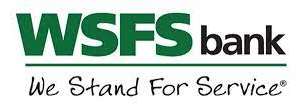Why Your Small Business Should Take the Long View on Inflation

When you hear and read about inflation, the attention is typically placed on inflation’s impact on the cost for consumer goods, and for good reason. High inflation hits people where it hurts most — their wallets.
But small business owners and operators must deal with inflation’s impacts as well, and as it continues to be a major cost factor, their already tight margins become increasingly crunched.
Small business owners are often faced with the dilemma of retaining customers while raising prices on their products and services as their supply chains also tighten. According to the National Federation of Independent Business, small businesses began 2022 raising prices in an attempt to pass on higher inventory, supplies, and labor costs.
While this approach may help stem the tide of inflation in the short term, small businesses should be even more focused on preparing for long-term cost increases and other challenges.
Consider these factors and approaches as you position your business to tackle inflation.
Inflation’s Stranglehold Isn’t Going Away
While the actual rate of inflation may ease in 2022, it is still expected to remain a challenge. Coupled with a still very tight labor market and expected rises in the Fed interest rates, the result is that small businesses will need to prepare for tighter margins.
Many small businesses I speak with are adjusting by raising prices to keep up with cost increases of their goods and services but are doing so to meet today’s prices.
I recommend they expand their projections beyond the present.
Small business owners and operators should be projecting price increases to meet the cost of goods sold six months out to protect their margins.
Again, even if inflation subsides over the next several months, other market factors could keep the supply chain tight and, as a result, keep costs higher than pre-pandemic levels.
Lean on Your Customer Relationships
Meanwhile, B2B and B2C customers are feeling inflation’s impact, and some may be facing the same dilemmas, whether it’s the rising costs for food and household items or their own labor shortage and supply chain challenges.
Throughout the pandemic, communities have rallied around their small businesses to help support them financially with a truly “shop local” mentality.
Be transparent with your customers about prices and give them incentives to continue purchasing your products or services.
Cultivate Your Partnerships
During the pandemic, many small businesses partnered with other local businesses to deliver one another’s products and services in mutually beneficial ways. Consider restoring these arrangements or looking at new ways to take those relationships even further to help combat rising costs while driving revenues for you and your partner businesses.
Finally, speak with your banker. Whether your business needs a short-term cash infusion or is able to expand its offerings, its always a good idea to check in and reassess your finances, look at favorable loan options to invest back into your business, secure more operating capital, buy new equipment, or purchase property that can also open up new revenue streams.
___________________

Jeremy Shackleford is Senior Vice President, Director of Small Business Sales for WSFS Bank. He joined WSFS in 2018 after nearly 20 years working in banking and financial services, and was most recently Senior Vice President, Regional Manager for WSFS’s Greater Philadelphia Market, where he oversaw 15 Retail Office locations. He also served 10 years as a member of the United States Air Force (AFSOC).
Connect With Your Community
Subscribe for stories that matter!
"*" indicates required fields































